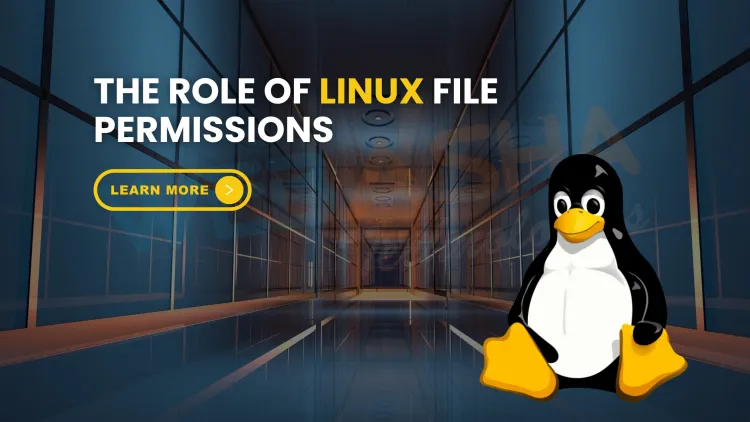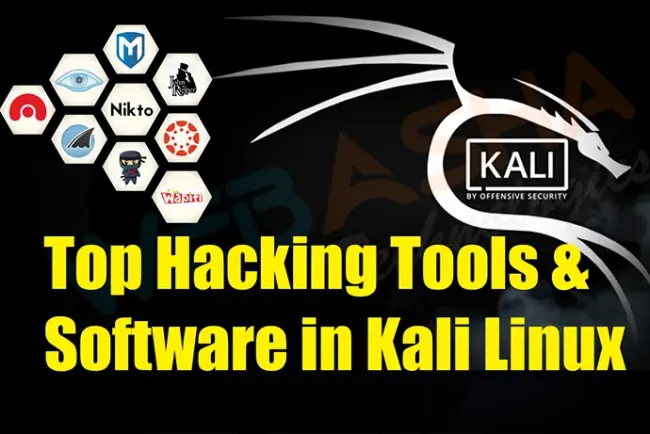What is the role of Linux file permissions in cybersecurity? The Detailed Guide
Linux file permissions are a fundamental part of cybersecurity. This blog explains what Linux file permissions are, why they matter for cybersecurity, and how students can manage and secure them. It covers permission types (read, write, execute), numeric values, special permissions like SetUID and Sticky Bit, real-world risks from misconfigurations, and best practices for securing Linux systems. The guide is designed for cybersecurity students and beginners aiming to learn Linux system hardening techniques.

Table of Contents
- What Are Linux File Permissions?
- Why Linux File Permissions Matter for Cybersecurity
- Linux File Permission Types Explained
- How to View File Permissions in Linux
- Numeric (Octal) Representation of Permissions
- How to Change File Permissions
- Special Permission Types in Linux
- Real-World Security Risks with Misconfigured Permissions
- Essential Linux Security Tools for File Permission Audits
- Best Practices for Students
- Real-World Example: Apache Web Server Misconfiguration
- Comparison Table: Default vs Secure File Permissions
- Conclusion
- Frequently Asked Questions (FAQs)
Understanding Linux file permissions is foundational for anyone pursuing a career in cybersecurity. Linux powers critical systems across the internet, cloud environments, and enterprise networks. Misconfigured file permissions can lead to unauthorized access, data breaches, and privilege escalation attacks.
This blog provides a structured, easy-to-understand guide on Linux file permissions, their importance in cybersecurity, and real-world practices for students and professionals aiming to secure Linux systems.
What Are Linux File Permissions?
Linux file permissions control who can read, write, or execute files and directories. Every file and directory in Linux has associated access rights defined for three categories:
-
Owner (User): The file's creator or assigned user.
-
Group: A collection of users grouped together for administrative purposes.
-
Others: Everyone else on the system.
Why Linux File Permissions Matter for Cybersecurity
In cybersecurity, controlling access is critical. Misconfigured file permissions can lead to:
-
Unauthorized access to sensitive files
-
Privilege escalation through improperly secured scripts
-
Service disruptions or data loss
Example Scenario:
A web server’s configuration file containing database passwords is readable by everyone. An attacker exploiting this could gain access to sensitive databases.
Linux File Permission Types Explained
Each file or directory has three permission types:
-
Read (r): View the contents of a file or list directory contents.
-
Write (w): Modify the file or add/delete files within a directory.
-
Execute (x): Run the file as a program or script; for directories, access files within.
How to View File Permissions in Linux
Use the ls -l command:
ls -l /home/student
Example output:
-rwxr-xr-- 1 student student 2048 Jul 9 example.sh
Breakdown:
-
rwx→ Owner permissions -
r-x→ Group permissions -
r--→ Others permissions
Numeric (Octal) Representation of Permissions
Permissions can also be represented using numbers:
| Permission | Symbol | Value |
|---|---|---|
| Read | r | 4 |
| Write | w | 2 |
| Execute | x | 1 |
For example, rwxr-xr-- is represented as 754.
-
Owner: 7 (4+2+1) → Read, write, execute
-
Group: 5 (4+0+1) → Read, execute
-
Others: 4 (4+0+0) → Read only
How to Change File Permissions
You can modify file permissions using chmod:
chmod 754 example.sh
Changing Ownership
Use chown to change file owner and group:
chown student:admins example.shSpecial Permission Types in Linux
Beyond the basic read, write, execute permissions, Linux uses:
-
SetUID (s): Allows users to run a file with the file owner's privileges.
-
SetGID (s): Same as SetUID but for groups.
-
Sticky Bit (t): For directories, prevents users from deleting other users' files. Common on
/tmp.
Command Example:
chmod +s somefile # Set SetUID
chmod g+s somefile # Set SetGID
chmod +t /shared # Set Sticky Bit on directoryReal-World Security Risks with Misconfigured Permissions
| Risk Scenario | Impact Example | Prevention |
|---|---|---|
| World-writable scripts | Attackers inject malicious code | Use least privilege principle |
| Sensitive config files readable | Exposure of passwords/API keys | Restrict read access to owner only |
| Loose /etc/passwd or /etc/shadow | User credential compromise | Ensure root-only access |
| SetUID binaries poorly controlled | Privilege escalation | Regularly audit with tools like find |
Essential Linux Security Tools for File Permission Audits
-
ls -l: Quick manual checks
-
find: Discover risky files
find / -perm -4000 2>/dev/null -
Lynis: Automated Linux security audit tool
-
OSSEC/Wazuh: File integrity monitoring
Best Practices for Students
-
Apply Least Privilege Principle: Give only necessary permissions.
-
Regular Permission Audits: Periodically review and adjust file permissions.
-
Avoid SetUID Unless Required: Minimize security risks.
-
Use Group Permissions Wisely: Organize user access logically.
-
Secure Home Directories: Use
chmod 700for private files and folders.
Real-World Example: Apache Web Server Misconfiguration
In many beginner setups, students mistakenly set /var/www/html files as 777 for convenience. This opens serious security risks.
Proper setting:
chmod -R 755 /var/www/html
chown -R www-data:www-data /var/www/htmlComparison Table: Default vs Secure File Permissions
| File/Directory | Default Permission Example | Recommended Secure Setting |
|---|---|---|
| /etc/shadow | -rw-r----- | -rw------- (root only) |
| /var/www/html | drwxr-xr-x | drwxr-xr-x (www-data owned) |
| User Home Directory | drwxr-xr-x | drwx------ |
| /tmp | drwxrwxrwt | Sticky Bit enforced |
Conclusion
For cybersecurity students, understanding Linux file permissions is non-negotiable. Mastering how to set, check, and secure file permissions ensures you can protect systems from unauthorized access and maintain data integrity.
Whether preparing for certifications or hands-on roles in SOC teams or system administration, file permission management forms a core part of Linux security hygiene.
FAQs
What are Linux file permissions?
Linux file permissions define who can read, write, or execute files and directories on a Linux system.
Why are Linux file permissions important in cybersecurity?
They prevent unauthorized users from accessing sensitive files, reducing risks of data leaks and privilege escalation.
How can I check file permissions in Linux?
Use the ls -l command to view file permissions in the terminal.
What do rwx mean in Linux permissions?
r = read, w = write, x = execute. These indicate allowed actions for user, group, and others.
What is chmod in Linux?
chmod is a command used to change file or directory permissions in Linux.
What is the numeric value system for Linux permissions?
Read = 4, Write = 2, Execute = 1. Permissions are combined as numbers like 755 or 700.
What does chmod 755 mean?
Owner: read, write, execute. Group: read, execute. Others: read, execute.
How do I set permissions to owner-only access?
Use chmod 700 filename to allow only the owner full access.
What is chown in Linux?
chown changes the ownership of files and directories to a specific user and/or group.
What is the sticky bit in Linux?
A permission setting that prevents users from deleting others' files in a shared directory like /tmp.
What is SetUID in Linux?
A special permission that allows a file to be executed with the file owner's privileges.
How do I find all files with SetUID in Linux?
Use find / -perm -4000 2>/dev/null.
How does Linux protect sensitive files like /etc/shadow?
It sets restrictive permissions (usually readable and writable only by root).
Can misconfigured permissions lead to cyber attacks?
Yes, attackers can exploit loose permissions to read sensitive files or run unauthorized scripts.
What tools can I use for Linux permission auditing?
Lynis, rkhunter, chkrootkit, find, and manual ls -l checks.
How often should Linux file permissions be audited?
Regularly—monthly or after major system updates or changes.
Can Linux permissions prevent ransomware?
While not foolproof, properly set permissions reduce the attack surface for ransomware.
What is the best practice for user home directories?
Set home directory permissions to 700 to prevent others from accessing them.
Should web server files be world-writable?
No, web server files should have limited permissions (e.g., 755 or less).
What are common Linux permission mistakes?
Setting files to 777, not using groups properly, ignoring SetUID files.
How do I secure executable scripts on Linux?
Limit execute permissions only to required users and review scripts for secure code.
What is the difference between user, group, and others in Linux permissions?
User: file owner. Group: associated user group. Others: everyone else.
How can I test my Linux permission knowledge?
Practice with virtual labs or Linux hardening challenges available in cybersecurity courses.
What’s the role of permissions in penetration testing?
Penetration testers check for misconfigured permissions as part of system hardening assessments.
How does Linux permissions integrate with cybersecurity frameworks?
They align with CIS Benchmarks and NIST standards under access control policies.
What’s the best way to learn Linux permissions?
Hands-on practice, cybersecurity courses, and following structured tutorials.
Can Linux permissions prevent privilege escalation?
Yes, by restricting access to sensitive executables and scripts.
Are there GUI tools for managing Linux permissions?
Yes, file manager tools on Linux desktops and security control panels.
How are permissions stored on a Linux system?
Permissions are metadata attributes stored in the inode table of the file system.
What is the umask setting in Linux?
Umask sets default permissions for newly created files and directories.














![Top 10 Ethical Hackers in the World [2025]](https://www.webasha.com/blog/uploads/images/202408/image_100x75_66c2f983c207b.webp)








